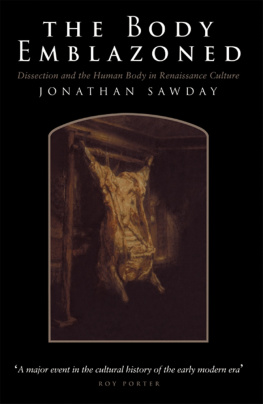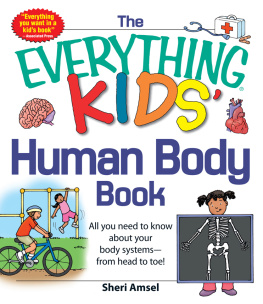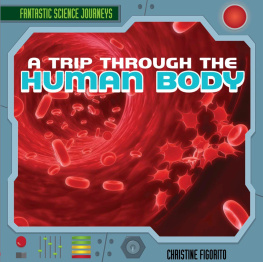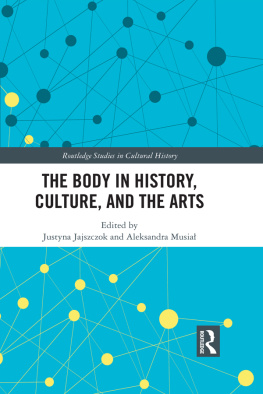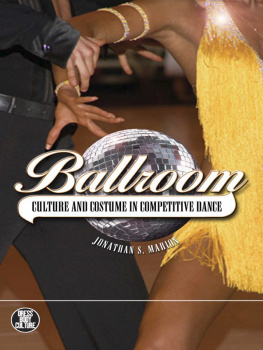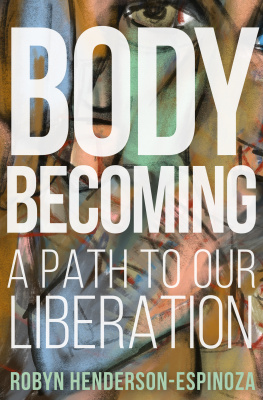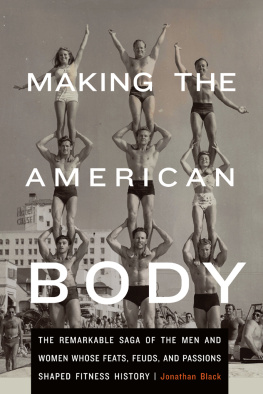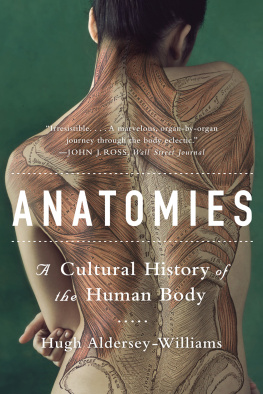Jonathan Sawday - The Body Emblazoned: Dissection and the Human Body in Renaissance Culture
Here you can read online Jonathan Sawday - The Body Emblazoned: Dissection and the Human Body in Renaissance Culture full text of the book (entire story) in english for free. Download pdf and epub, get meaning, cover and reviews about this ebook. year: 2013, publisher: Routledge, genre: Science. Description of the work, (preface) as well as reviews are available. Best literature library LitArk.com created for fans of good reading and offers a wide selection of genres:
Romance novel
Science fiction
Adventure
Detective
Science
History
Home and family
Prose
Art
Politics
Computer
Non-fiction
Religion
Business
Children
Humor
Choose a favorite category and find really read worthwhile books. Enjoy immersion in the world of imagination, feel the emotions of the characters or learn something new for yourself, make an fascinating discovery.
- Book:The Body Emblazoned: Dissection and the Human Body in Renaissance Culture
- Author:
- Publisher:Routledge
- Genre:
- Year:2013
- Rating:5 / 5
- Favourites:Add to favourites
- Your mark:
- 100
- 1
- 2
- 3
- 4
- 5
The Body Emblazoned: Dissection and the Human Body in Renaissance Culture: summary, description and annotation
We offer to read an annotation, description, summary or preface (depends on what the author of the book "The Body Emblazoned: Dissection and the Human Body in Renaissance Culture" wrote himself). If you haven't found the necessary information about the book — write in the comments, we will try to find it.
Jonathan Sawday: author's other books
Who wrote The Body Emblazoned: Dissection and the Human Body in Renaissance Culture? Find out the surname, the name of the author of the book and a list of all author's works by series.
The Body Emblazoned: Dissection and the Human Body in Renaissance Culture — read online for free the complete book (whole text) full work
Below is the text of the book, divided by pages. System saving the place of the last page read, allows you to conveniently read the book "The Body Emblazoned: Dissection and the Human Body in Renaissance Culture" online for free, without having to search again every time where you left off. Put a bookmark, and you can go to the page where you finished reading at any time.
Font size:
Interval:
Bookmark:

impressively rich... a fascinating cultural history
David Harley, Medical History
absorbing and ambitious... astute and learned
John Carey, Sunday Times
monumental... a remarkable study of a period unlike any before or since
Peter Bradshaw, London Review of Books
provocative... a tour de force that promises to shape the questions scholars will ask for years to come.
John G. Norman, Medievalia et Humanistica
fascinating, learned, and intelligent.... It deserves to be read widely.
Mary Bly, Early Modern Literary Studies
daring... shrewd, assured
Roy Porter, The Times Higher Education Supplement
sharp, resourceful... exciting, thought-provoking
Michael Kerrigan, The Scotsman
[I]n this dissection of the culture of science, neither the science nor the culture gets short-changed.
W. F. Bynum, Nature
compelling
Textual Practice


First published 1995
by Routledge
2 Park Square, Milton Park, Abingdon, Oxon, OX14 4RN
Simultaneously published in the USA and Canada by Routledge
270 Madison Ave, New York NY 10016
Reprinted 1996
First published in paperback 1996
Transferred to Digital Printing 2006
Routledge is an imprint of the Taylor & Francis Group
1995 Jonathan Sawday
Typeset in Baskerville by
PontingGreen Publishing Services, Chesham, Bucks
All rights reserved. No part of this book may be reprinted or reproduced or utilized in any form or by any electronic, mechanical, or other means, now known or hereafter invented, including photocopying and recording, or in any information storage or retrieval system, without permission in writing from the publishers.
British Library Cataloguing in Publication Data
A catalogue record for this book is available from the British Library
Library of Congress Cataloguing in Publication Data
A catalogue record for this book is available from the Library of Congress
ISBN 0-415-04444-8 (hbk)
ISBN 0-415-15719-6 (pbk)
ISBN: 978-1-134-52635-2 (ebk)
Publishers Note
The publisher has gone to great lengths to ensure the quality of this reprint but points out that some imperfections in the original may be apparent
Printed and bound by CPI Antony Rowe, Eastbourne
between pages 38 and 39
between pages 84 and 85
This book traces what I have come to call the culture of dissection in the early-modern period. This period, in Europe, has long been known as the Renaissance a rebirth of arts, sciences, and letters following the so-called long millennium of the medieval period. Few cultural historians would now be happy with such grand periodic gestures, and fewer still would accept at face value the claims of European humanism to have restored classical culture from the grip of scholasticism. Nevertheless, our idea of the Renaissance is still (and for perfectly understandable reasons) informed by the great literary, scientific, artistic, and architectural achievements of that age. Those achievements seem to span the European continent, and the two hundred years of cultural history which is this books subject. However, in this account, the monuments of the European Renaissance the works of Michelangelo, say, Leonardo da Vinci, or Shakespeare where they are glimpsed, will appear in what may seem at first an unfamiliar light. For those great memorials to Renaissance thought and art are here viewed through the refracting prism of what, now, is termed science, in particular the science of human anatomy.
Why anatomy? The juxtaposition, for example, of Spensers epic poem The Faerie Queene, a Cellini statue, or the paintings of Rembrandt, with an anatomical textbook may, at first, seem gratuitous, if not entirely tasteless. But the reasons for such juxtapositions will, I hope, become apparent in what follows. For it is not just that the period between the end of the fifteenth century and the end of the seventeenth century sees the birth of a new science of the human body which places the human anatomy at the centre of this study. Rather, as I shall argue throughout this book, the early-modern period sees the emergence of a new image of the human interior, together with a new means of studying that interior, which left its mark on all forms of cultural endeavour in the period. It is a central thesis of what follows that we cannot properly understand the familiar (or less familiar) cultural legacy of the Renaissance, without attending to the birth of a science which was to transform entirely peoples understanding not only of themselves and their sense of identity or selfhood, but of the relationship of their minds to their bodies, and even their feeling of location in human society and the natural world.
The culture of dissection is, then, the culture of enquiry: an incisive recomposition of the human body, which entailed an equivalent refashioning of the means by which people made sense of the world around them in terms of their philosophy of understanding, their theology, their poetry, their plays, their rituals of justice, their art, and their buildings. By concentrating on the literature of the period, I hope to show how this culture of dissection reached down, in England, to the imaginative arts in particular lyric and epic poetry which (now) are seen to be entirely divorced from the empiricism of science. That divorce, particularly in twentieth-century Britain, perhaps less so in the United States or continental Europe, is held to be so complete as to be almost natural. How did this seemingly natural taxonomy of knowledge, and hence creative work, come about? What will appear unfamiliar is the extent to which the divorce between art and science, or reason and the imagination, was a consistently negotiated settlement. For a while, indeed, it appeared that there was no divorce required, since the scientists, or natural philosophers, and the poets and artists of that period, saw their endeavours as complementary. In their individual spheres, poets, philosophers, scientists, architects, and artists had begun the task of making new sense of the interior world of the human frame. For a brief period, which came to a close at the end of the seventeenth century, a view of knowledge flourished which was, paradoxically, both recognizably modern, and yet nevertheless entirely different from the ways in which we now hold the disciplines of enquiry to be organized. How that difference ended and how a truly modern view of the world emerged is also part of the story this book sets out to tell.
This book also tells stories of terrible cruelty, which are tinged by a form of dark eroticism. It traces an uncomfortable union between the legalized rites of violence familiar to the inhabitants of early-modern metropolitan communities, and the disinterested pursuit of nature. The human body may, in the Renaissance, have been emblazoned or embellished through art and poetry. But to blazon a body is also to hack it into pieces, in order to flourish fragments of men and women as trophies. How that emblazoned body came to be created is also the subject of our enquiry.
The opening chapters of the book, therefore, introduce the broad scheme of Renaissance understanding of the human body and its relationship to the mind, or soul. In Chapters 3 and 4 we visit the anatomy theatres of earlymodern Europe, the playhouses of organized violence, in order to begin to understand the rituals which came to surround the body, and the taboos which had to be overcome if the body was to be the object of investigation. In Chapter 5, we see how the body came to be represented in poetry, art, and science, in the period. Chapter 6 is concerned with the fundamental reordering of knowledge under the pressure of the Cartesian analysis of corporeality, and the ways in which that analysis seemed to be foreshadowed and (later) developed in poetry and art. In Chapter 7 we see how the binary divide of male and female was understood in the Renaissance, and how women, in particular, became the subjects of an ever more stringent regime of male investigation. Finally, in Chapter 8 we trace the emergence of masculine science and the fragmentation of knowledge with which we have grown familiar in the modern world.
Font size:
Interval:
Bookmark:
Similar books «The Body Emblazoned: Dissection and the Human Body in Renaissance Culture»
Look at similar books to The Body Emblazoned: Dissection and the Human Body in Renaissance Culture. We have selected literature similar in name and meaning in the hope of providing readers with more options to find new, interesting, not yet read works.
Discussion, reviews of the book The Body Emblazoned: Dissection and the Human Body in Renaissance Culture and just readers' own opinions. Leave your comments, write what you think about the work, its meaning or the main characters. Specify what exactly you liked and what you didn't like, and why you think so.

